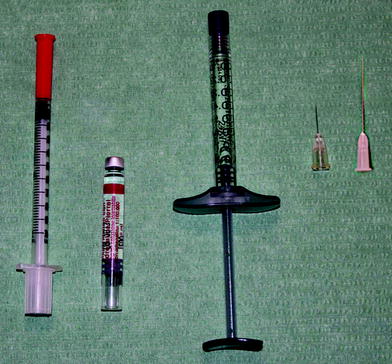Fig. 8.1
Levator labii superioris medially and the zygomatic major muscle. Reproduction of a lithograph plate from Gray’s anatomy (Henry Gray, Anatomy: Descriptive and Surgical)
8.2 Pitfalls
Injection should be done in the mid-deep dermis: not too superficially to avoid the creation of lumps or Tyndall effect, not too deep as no fold correction would be noticed.
A linear threading retrograde technique along the nasolabial fold can be used, concentrating on the upper triangular-shaped area below the nostrils and lateral to the ala.
The correction of this little area will produce a more youthful appearance because here usually the problem is the deepening related to age—induced loss of fat: Usually, it is the first part of the crease that has to be filled. When injecting the Y-shaped area avoid injecting just beneath the nostrils: Penetration of the needle should be stopped at the corner of the ala nasi without going under nostrils. This mistake may eventually lead to esthetical bad results with flaring of the nostrils or even ischemic evolution.
The material should be injected symmetrically in the two nasolabial folds leaving a certain amount in the syringe.
In the majority of cases, the largest amount of product can be injected in the Y-shaped area that needs a good volume addiction, diminishing the quantity of filler injecting moving down along the fold.
Technical skill: particularly attention should be paid in injecting the crease near the mouth corner: here just minute volume of filler should be delivered because of the dynamical feature of this area. These in fact are known as smile lines, and overcorrection will result in unattractive lumps at both sides of the mouth.
Safe point of injection: there are not particular dangerous anatomical structures in the nasolabial crease area. For this reason, there are not particular safe points to pay attention to.
8.3 Correction of Nasolabial Folds with HA and Cannula
8.3.1 Indications
Evident nasolabial folds. The cannula technique permits to avoid bruising but at the same time is less accurate.
Normally is useful when also bar code correction is performed with blunt cannula: In this situation thanks to a unique entrance point all the area located between the upper lip and the nasolabial folds, it can be filled by just rotating the cannula.
8.3.2 Contraindications
Attention should be paid if the area had been previously treated with permanent fillers.
The filler should not be injected in areas that lack sufficient blood supply or that have an infection or inflammation.
8.3.3 Materials
0.4–0.8 cc of medium viscosity HA (Fig. 8.2).
Blunt-tip cannula 27 G, 37 mm length.
Entrance needle 26 G, 13 mm length.
Local anesthetic (lidocaine, mepivacaine) with adrenaline 1:200,000 (equal to 1 mg/40 mL of solution).
Bandages and antiseptic solution.

Fig. 8.2
Materials for correction of nasolabial folds with HA and cannula
8.3.4 Material Choice
In Europe
Surgiderm 24XP
Surgiderm 30XP
Juviderm Ultra 3 and 4
Juvederm Volift
Restylane
Perlane.
In Asia
Juvederm Ultra Plus XC
Restylane.
In America
Juvederm Ultra Plus XC
Restylane.
Stay updated, free articles. Join our Telegram channel

Full access? Get Clinical Tree








